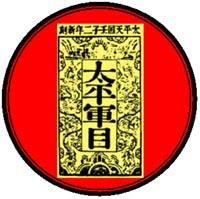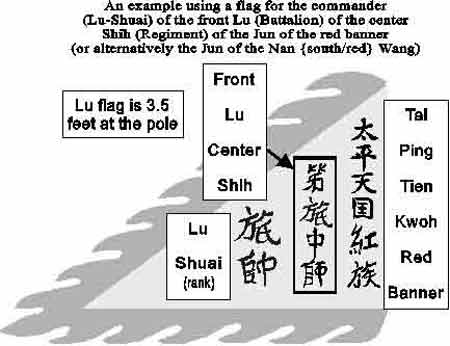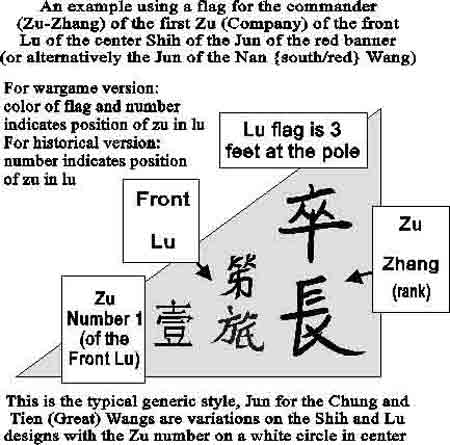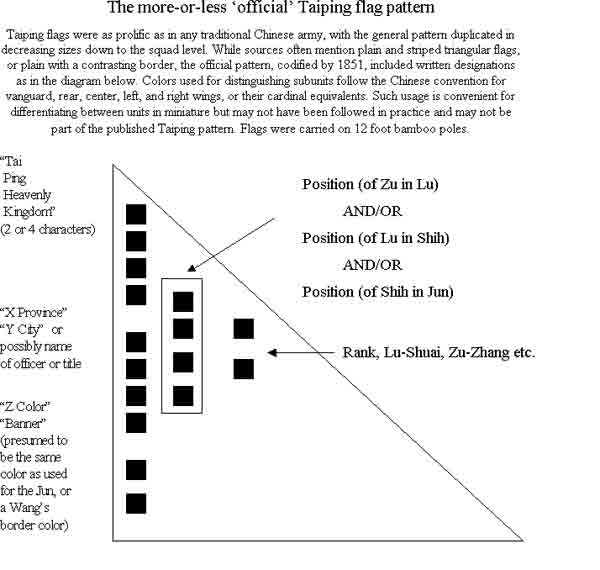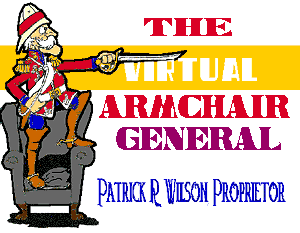
|
|
The Virtual Armchair General
|
Tai-P'ing Flags Information Tai-P'ing Jun and "Dragon Flag" Sets Tai-P'ing flags were as numerous and varied on the field as in any Chinese Army, with leaders even down to the NCO-equivalent often rating one. Actual examples are rare, and contemporary descriptions vague, but in theory Tai-P'ing flags followed guidelines set down in their "military manual" the T’ai-P’ing Chun-mu, which in turn is partly based on pre- and early-Qing precedent which organized units in multiples of five. Official pattern flags were triangular and specified by size for each Commander's rank, in increments of about one half foot from 9.5' to 2.5'. They carried the movement’s motto, the unit's "place" within the army, and a rank. Sometimes the commander’s name, or that of the general, the commander’s or unit’s hometown and province, and an honorary title was added. Titles and units often were described with terms seemingly unrelated to their function. For instance, characters that read “12th Temple Door, 2nd City Block of Heaven, 5” could be a literal translation of “2nd Zu, 12th Lu of the 5th Imperial Bodyguard of the Nine Gates,” or an honorific or administrative rank, signify an actual location, the Zu-Zhang’s (Company Commander's) name, or be another way of expressing unit precedence. In practice many flags were plain without any characters at all. Our flags fall between the two extremes in favor of practicality and simplicity. Organization of a Typical Jun 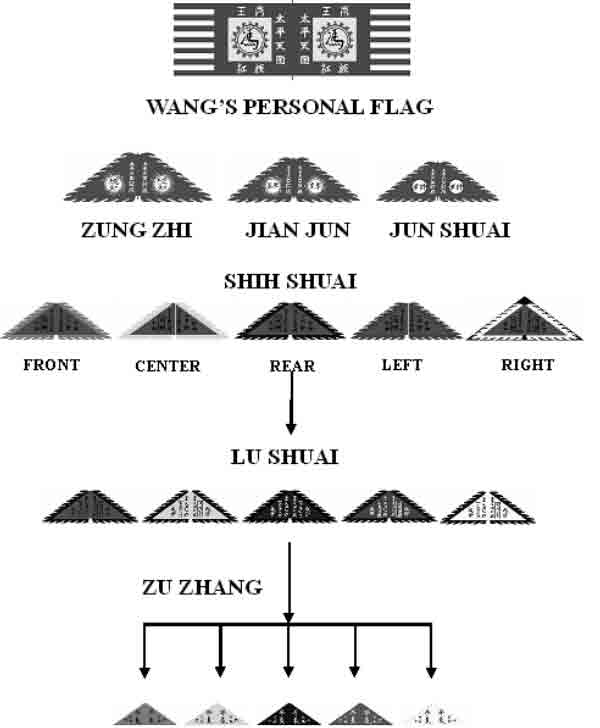
Flags for Shih (Regiment), Lu (Battalion), Zu (Company), and Liang (Platoon) were indicated by a cardinal direction and/or its traditionally associated color. Thus we have Front/South, Center, Rear/North, Left/East, and Right/West represented by red, yellow, black, blue, and white. The original Jun (roughly equivalent to a division) raised in 1851 were called after and led by each of the original Wangs, Great or Heavenly Wang, East Wang , West Wang , North Wang , and South Wang , who as first class Wang's rated flags 9.5-feet square. Since the term Wang means "King," and the Tai-P'ings rejected Manchu rule, these Wang's adopted Imperial yellow as their flag color. A "flame" edged border in the Wang’s direction color (either yellow, blue, white, black, or red) indicated distinctions between Jun . At least one example (for the South Wang or his functionary) hangs today in the Tai-P'ing Museum in Nanking. All other flags in a Jun reportedly followed the same color scheme and differed only in size and writing, making for very little variety. To avoid confusion and the look of sameness on the war gamer’s table, we offer in addition to these more historical versions a variation that applies the directional color theme to all organizational levels, using the appropriate colors for every unit (Zu are referred to by both color and number). This generic war game version is used for the organizational tree above, and could well have been an actual fashion adopted in some outfits as the army expanded to over 100 Jun . These versions have the added flexibility of being generic enough to an extent that they can represent any Jun from any period of the Rebellion merely by referring to each Jun by its ruling color as written on each flag, i.e. "The Jun of the Blue Banner," etc. Each Historical Set of both types includes flags for the Wang, a commandant, superintendent, general, 5 Shih with 5 Lu for each, enough Zu (25) for a complete Shih, and assorted slogan banners. Effort has been made to imitate the style and usage of 19th Century Mandarin script. While some official rank flags may have carried slogans, we have put these on separate flags. Extant non-rank flags seem to have a communicatory function, warning the men of the consequences of cowardice, or reminding an occupied town who their masters were. These include banners bearing the character for "order," which are found in other Chinese Armies and for which we have as yet no explanation. Examples in the literature usually carry mottos, such as the one with the full title of the Tai-P'ing religious movement in the frontispiece to Lindley’s Tai-P'ing-Tien-Kwoh, though may not have actually been battle flags. The most notorious non-rank flag was the large black one raised for all-out "Victory or Death!" attacks, failure of which supposedly resulting in execution. We include the historical all-black version in both sets and fanciful ones bearing the messages “Kill Demons by Heaven’s Order” and “Advance and Die Trying--or Don’t and Be Executed!” (These are not included in the "generic" Jun Sets). Later Wang's, numbering in the hundreds by the 1860's, seem to have abandoned the yellow-field-with-color-border practice, and even additional Jun of the original Wang's may not have repeated it. Our flags for the Chung Wang, Kan Wang, and Ying Wang are patterned after those described in the field by foreign officers during the 1860's. These are offered in a single version only, as much is conjectural and we have yet to find surviving examples. Dragon or "snake" flags accompanied every Wang and some generals. These were usually triangular, but some are shown square. We patterned ours after a Tai-P'ing specimen presented to Charles George Gordon, final Commander of the Imperial "Ever Victorious Army," often reproduced in the sources, and have added identifying script to some for the various Wang's. Included in the Dragon Flags Set to come are a few generic general’s flags, one of which is for Augustus Lindley, the Tai-P'ing’s English mercenary and apologist. Any of these are also available customized for any name or translation from English (see Main Page for information). Flags should be mounted on a scale 12 foot pole, preferably resembling bamboo. Examples Of Flag Text And Design
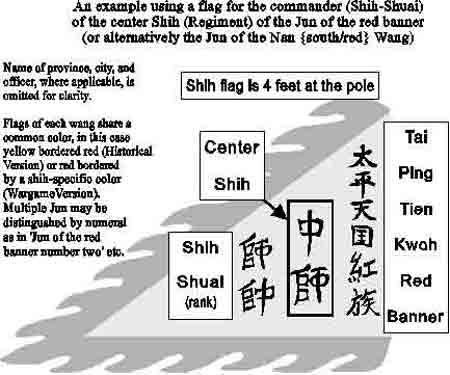
Return to 19th Century Chinese Flags Collection Main Page. Return to Tai-P'ing Flags Page
| |
